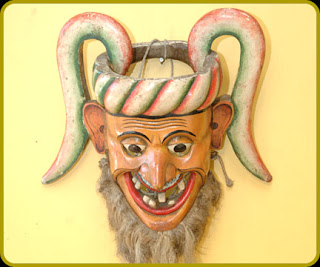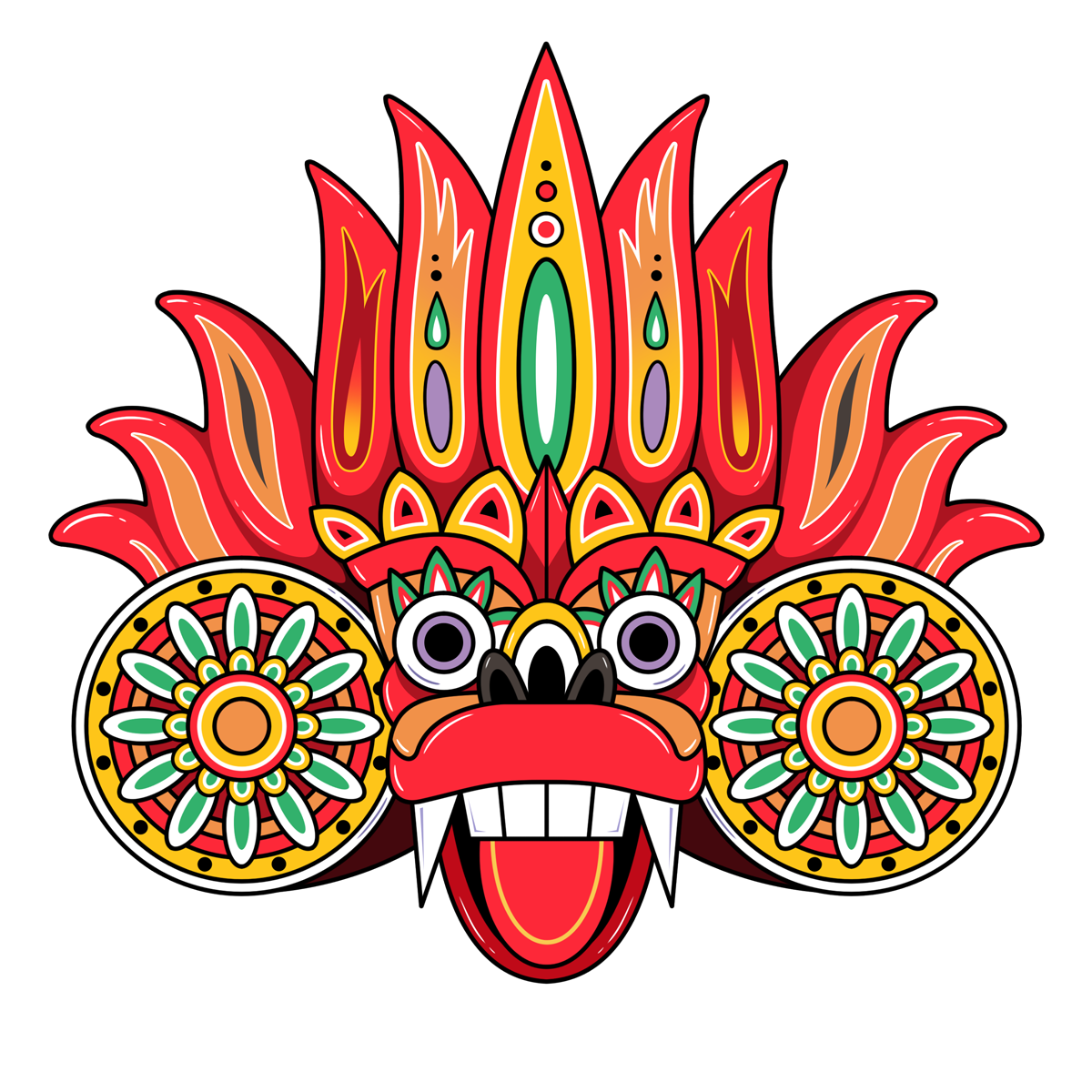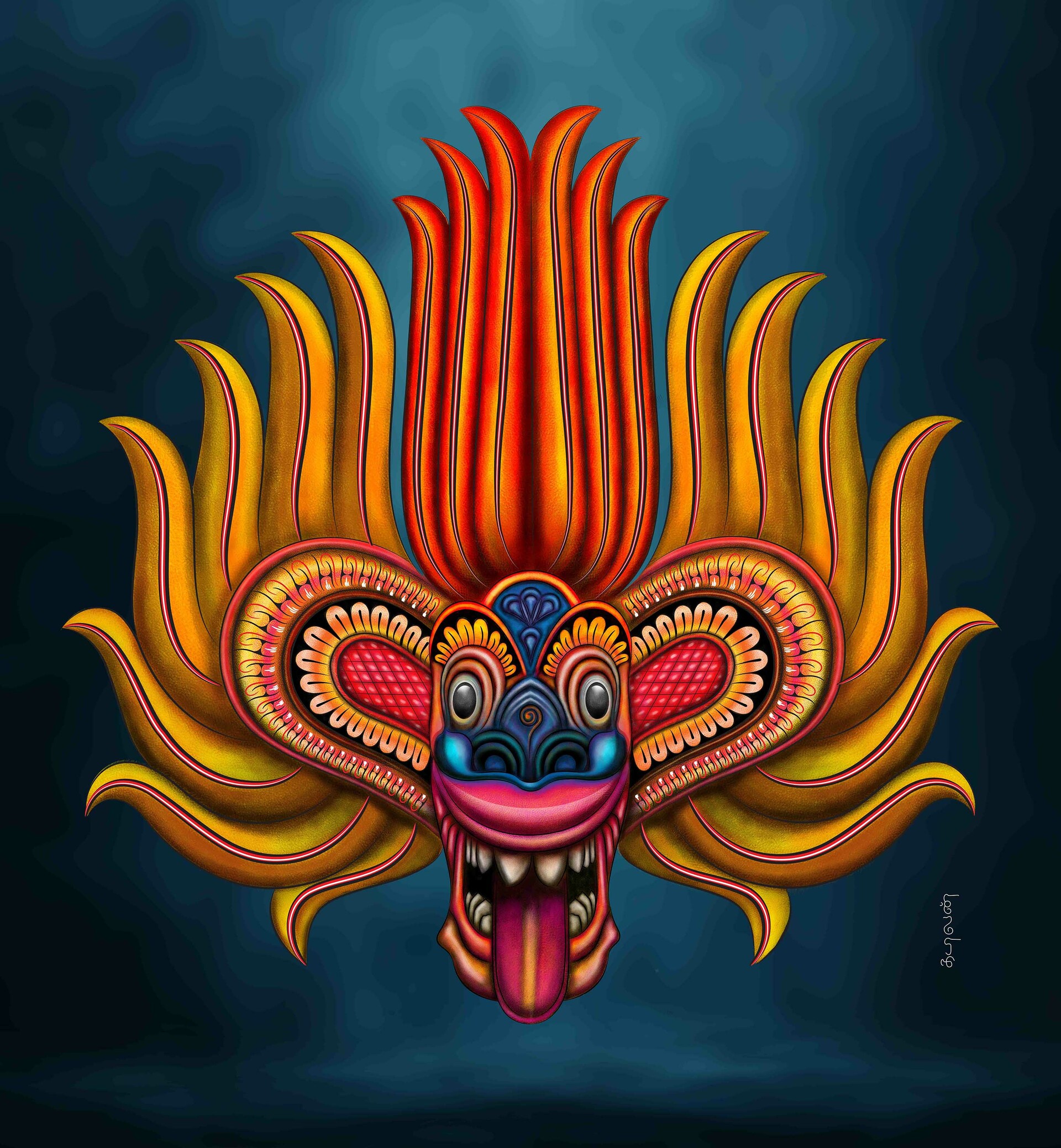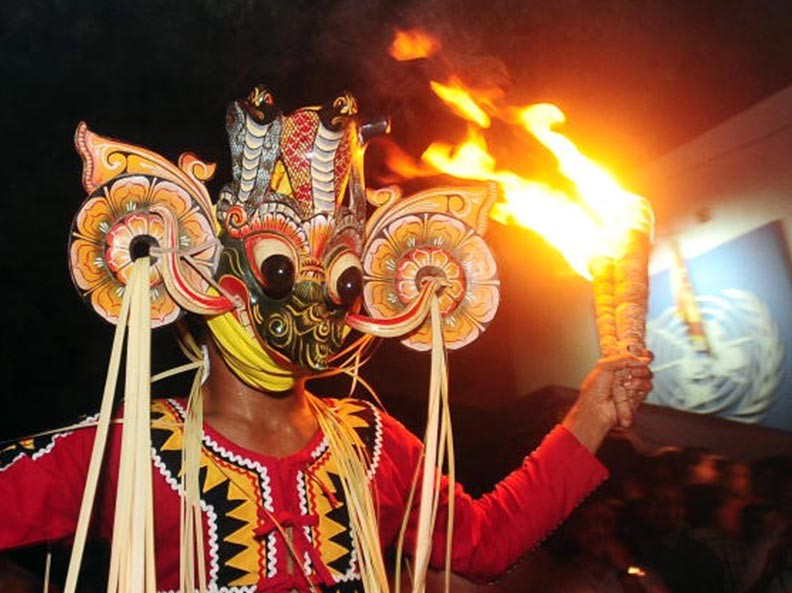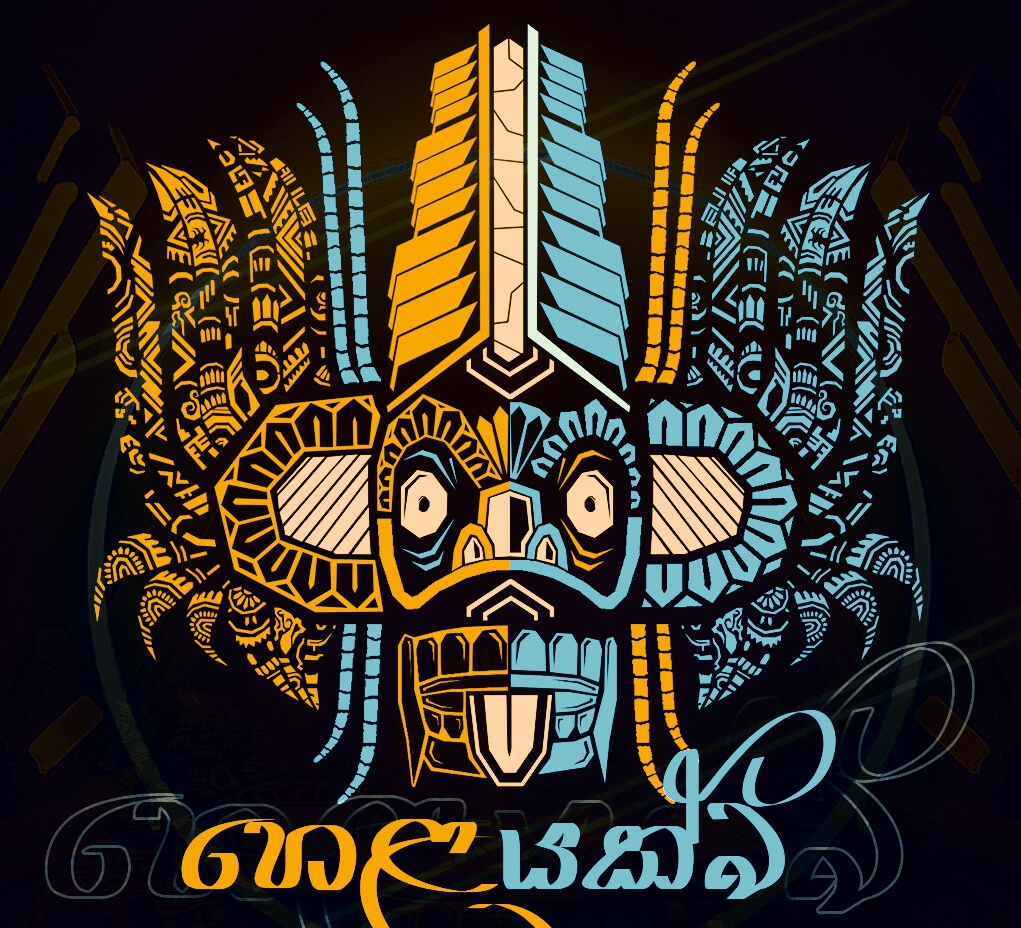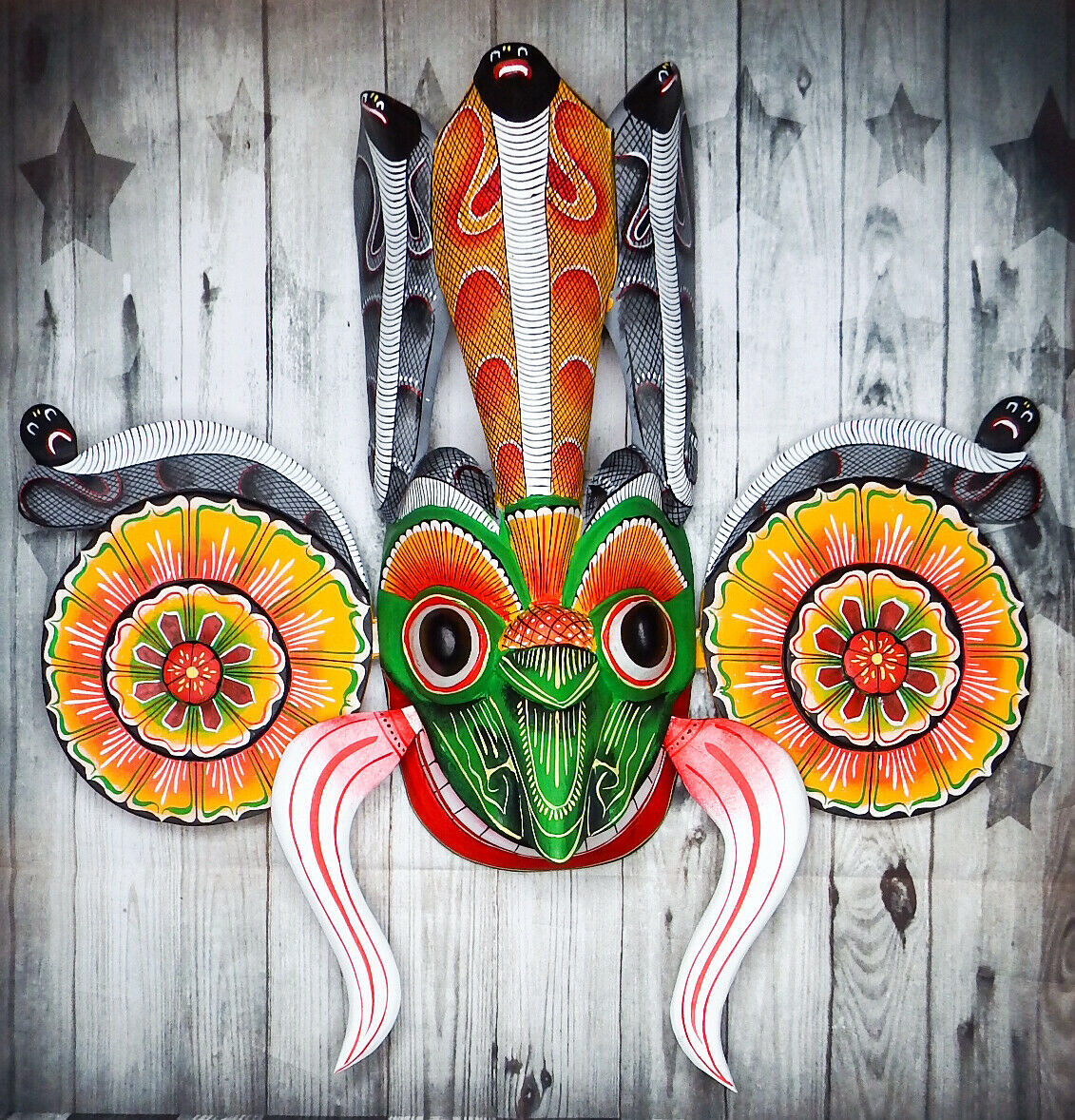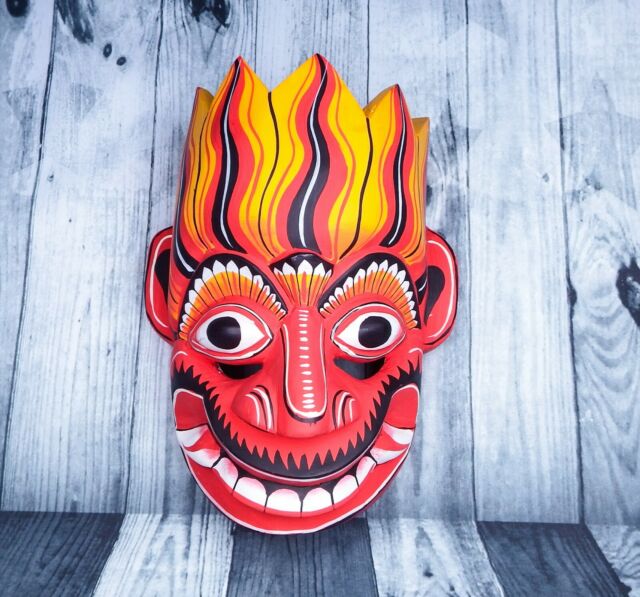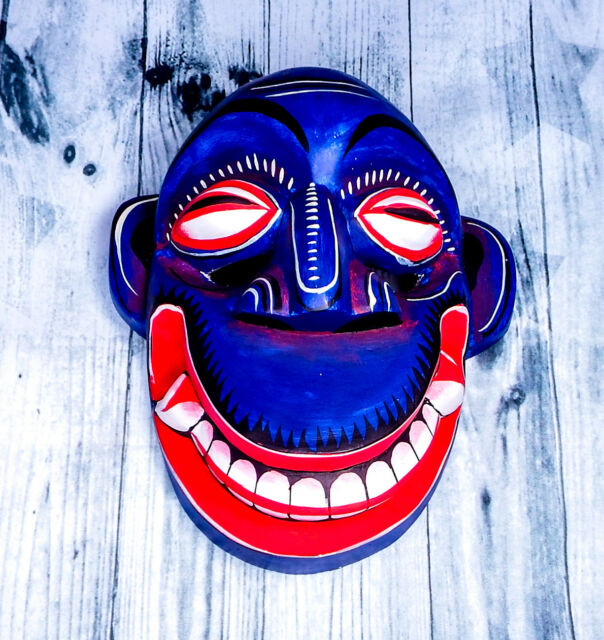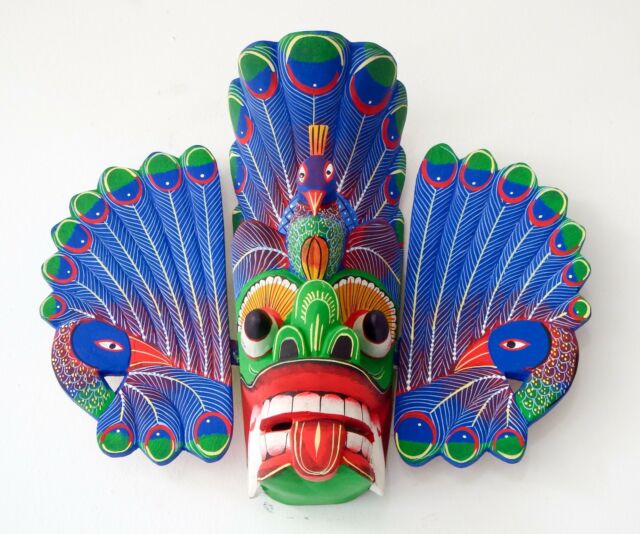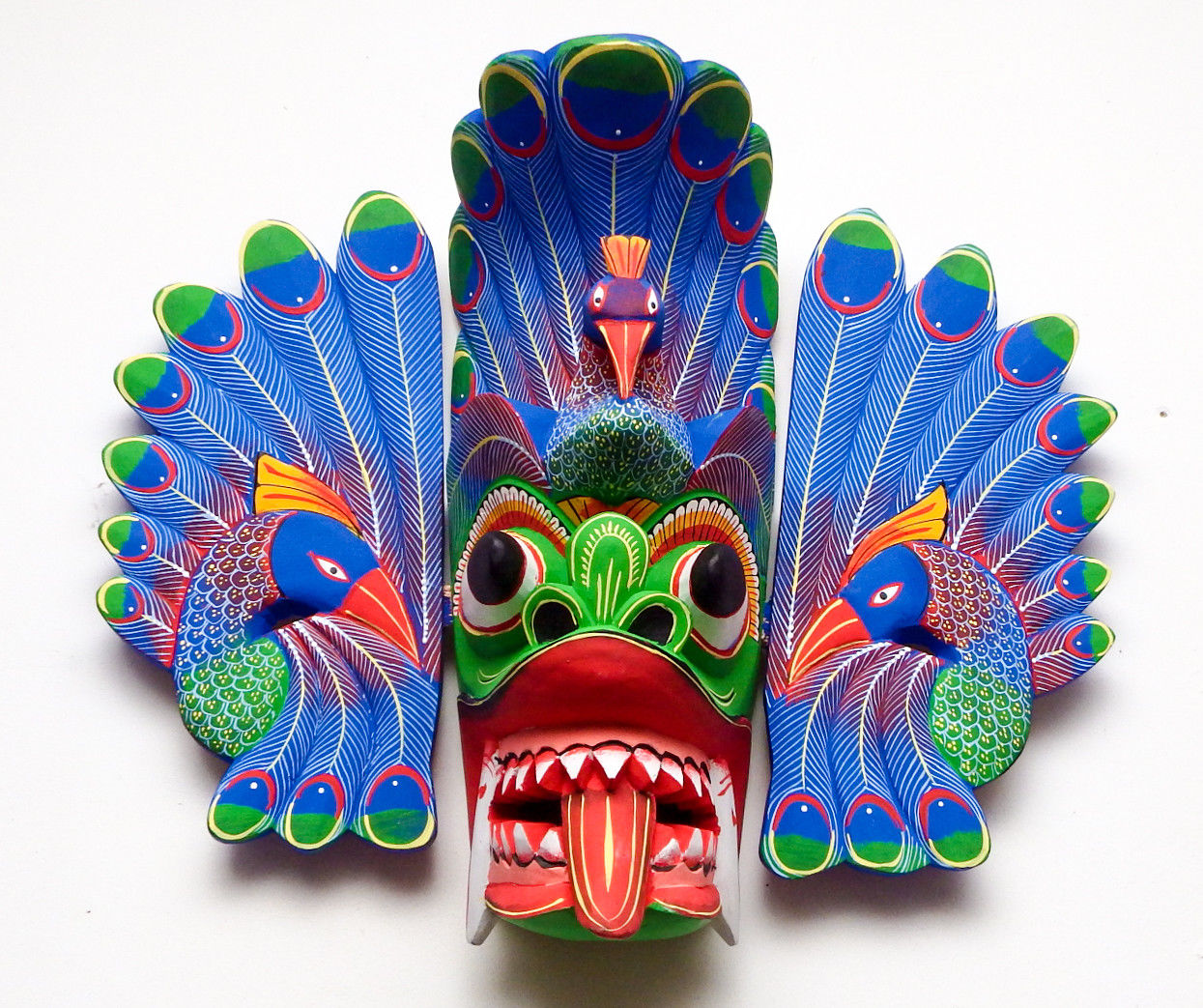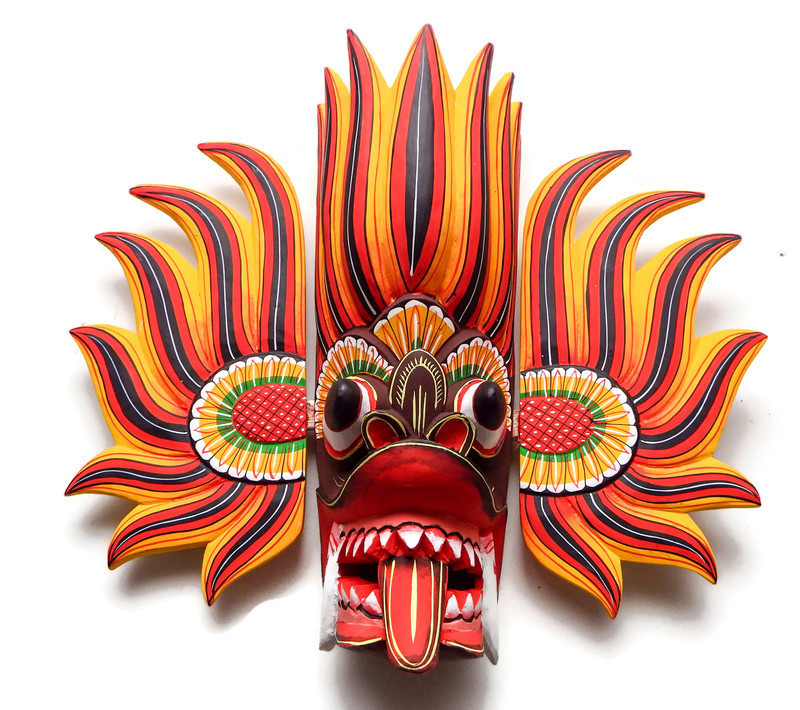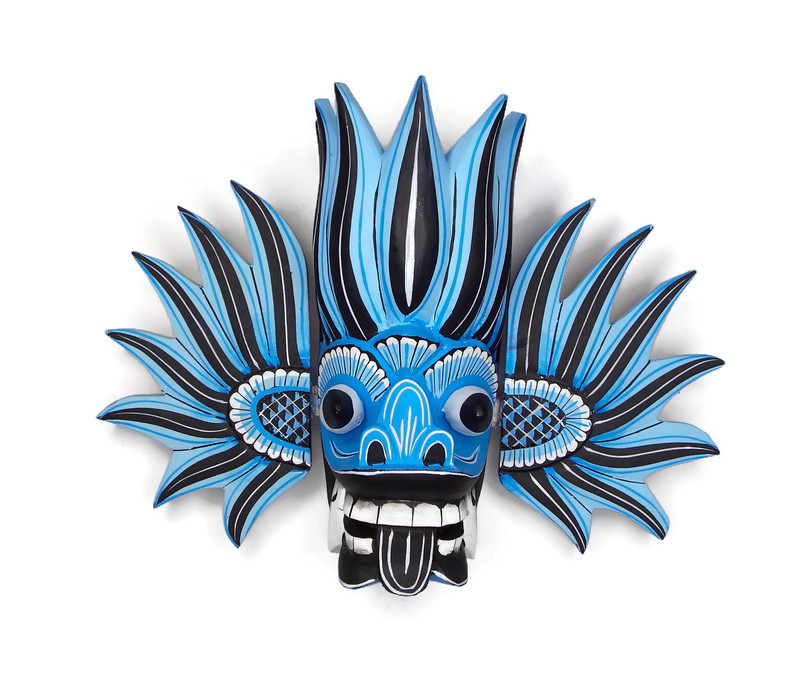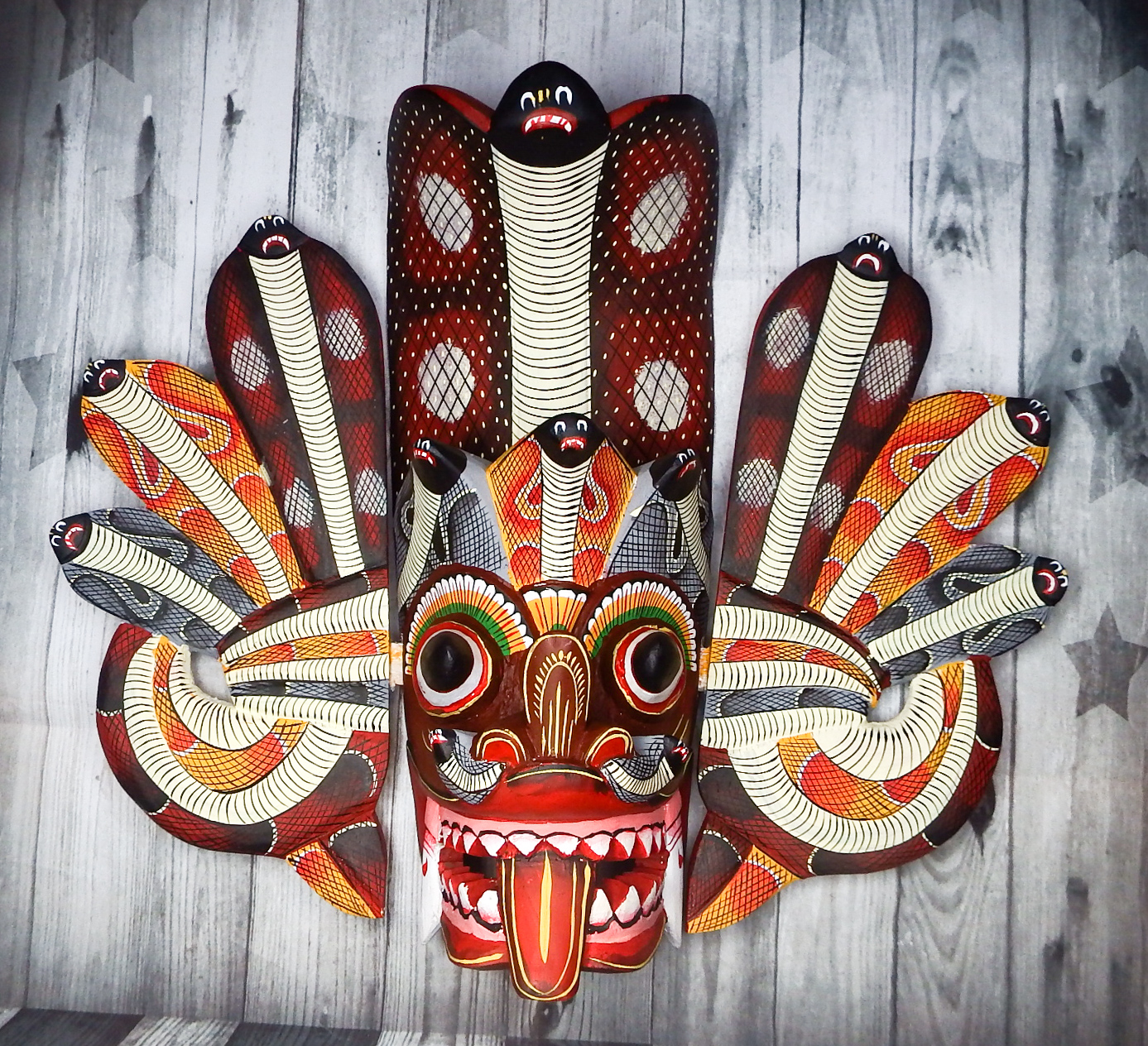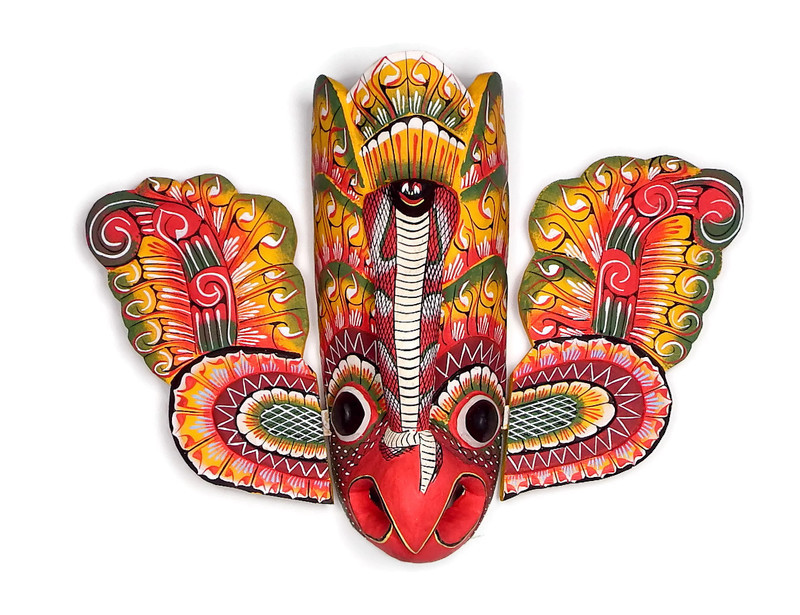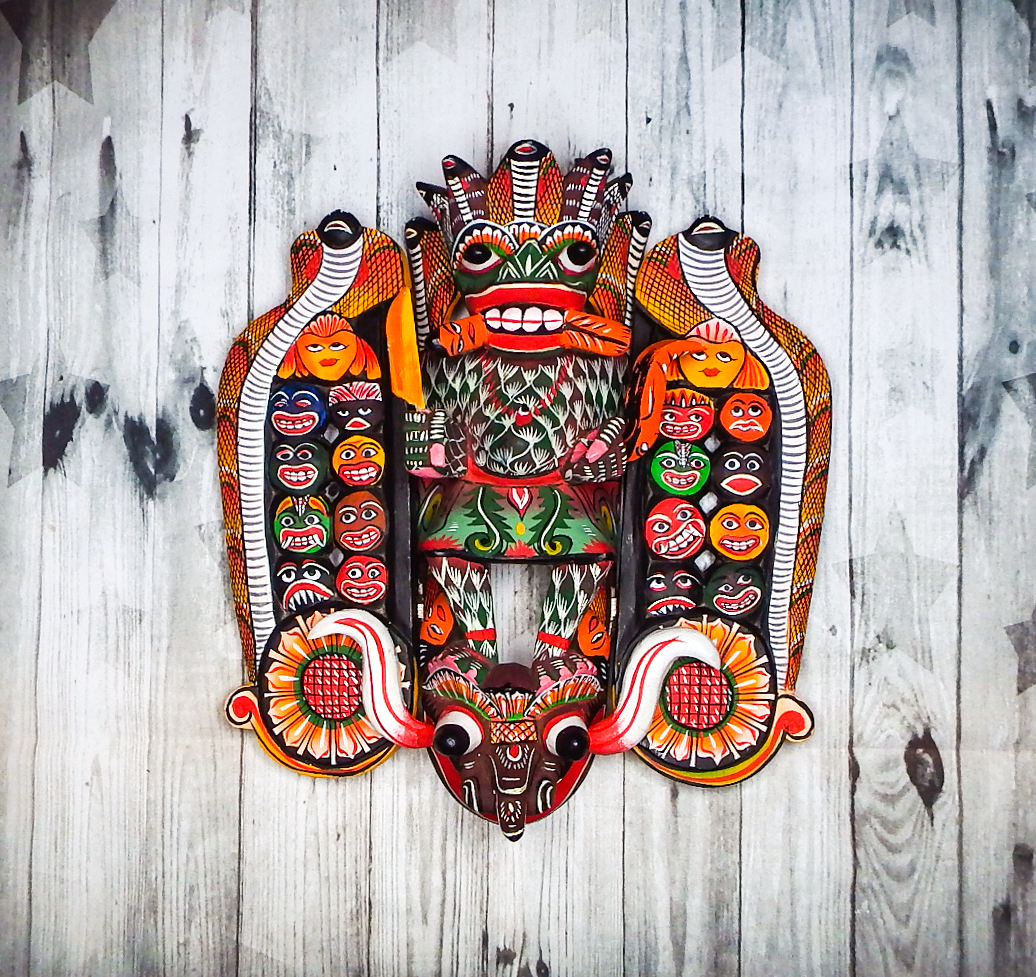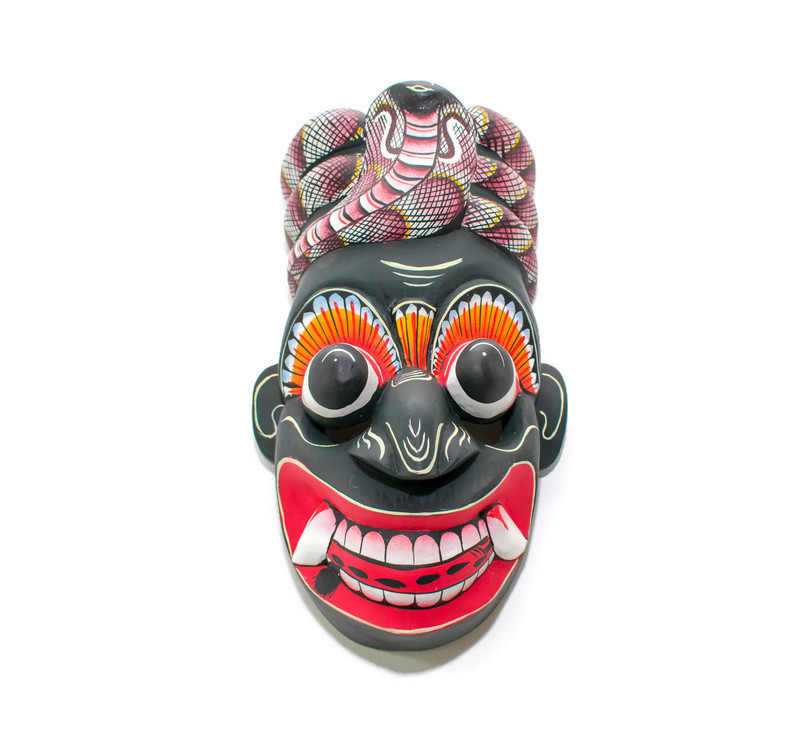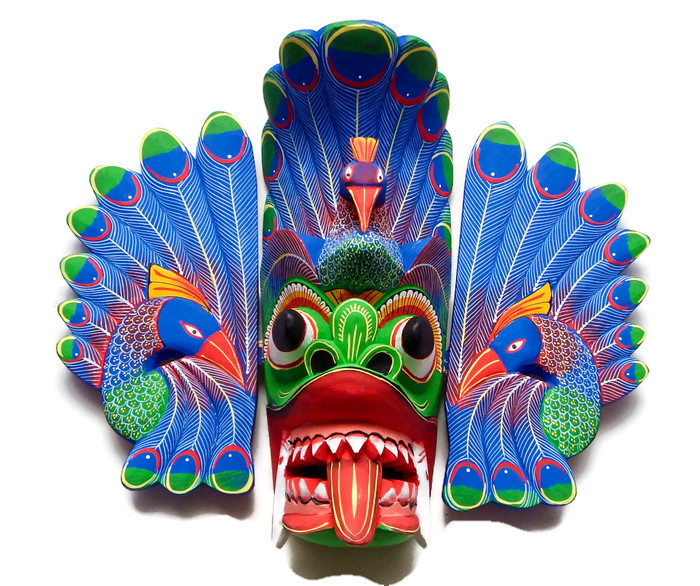KOLAM DANCES ( KOLAM MADUWA)
Sri Lanka has a rich culture of masked dance-drama, the best-known form being kolam (Tamil for “costume” or “guise”), which is mainly performed in southern, rural parts of the island. The masks associated with kolam number around 50 and are the most elaborate of the three categories. Faubian Bowers comments in Theatre in the East (1956) that they are “the finest examples of wood-carving still being executed for the theatre in the modern world”.
Kolam is a comic folk play – once popular now rarely performed – made up of loosely connected stories in a rural setting, enacted through dance, mime and dialogue. Characters are divided into humans (royalty, a variety of villagers), animals (bullocks, monkeys) and demons. The performances shift from the portrayal of 19th Century village scenes to stories involving spirits and creatures from Hindu mythology.
The impact of the kolam lies not in its narrative strength, but in the spectacle of the masks. A typical blend of sculpture and painting, the masks are often grotesque with bulging eyes, though some have humorous features. Notable aspects include the magnificent towering head-pieces of the king and queen, and the lengthy beard and largely toothless appearance of Anabera, the drum messenger. In contrast, the masks of the policeman, the Mudalali (shopkeeper), the Arachchi (village headman), and Hettiya (the foreign trader), are more conventional. As for the demons, there’s the awesome Nanda Gere, with two devil faces on each side, and a body between its teeth.
Kolam refers to a dance drama with the central theme and a series of inter-connected episodes enacted by dancers wearing masks culminating in a drama based mainly on the birth stories of the Lord Buddha. The masks featured in the picture are of the supernatural type. Among them are a variety of masks whose crowns are decorated as Cobra hoods.
Kolam is a traditional folk play in the west and in the south-west coastal regions in Sri Lanka. Masks are utilized in Kolam called as kolam masks ‘Ariyapala Wijesuriya’ family is one of the families among few groups who perform traditional kolam dances from the beginning till today.
According to the mythologies, kolam masks were originated from the period of King Maha Sammatha, the first King of human beings. The queen of this King was pregnant and she felt a strong desire to see mask-dances. But no one knew how to perform it and queen suffered more and more. Finally God Sakra concern about her and asked God Vishvakarma (God of craftsmen) to provide the masks and the lyrics for such dance. Next morning the masks and verses provided by God Vishvakarma were found in the royal garden. After King’s order mask dances were performed in front of the queen.Then she was highly pleased and satisfied, and her pregnancy cravings disappeared.
This mythological aspect is referred to in every Kolam dance by arriving two characters wearing masks of King and Queen. But the Kolam dance depicts not only mythological aspects but also the aspects of lives in traditional Sinhalese society by performing various stories of royal servants.
Among the Kolam mask, prominence is given to characters like Panikkala, Nonchi akka, Hewa, Jasaya, Lenchina, Mudali, etc.
Ana Bera Kolama
Dukkiniya Kolama
Mudali Kolama
Police Kolama
Kolam Dance
Kolam dance tells the story of the Rakshasas king and queen, their subjects and servants. The characters in the story are represented by dancers wearing masks.There are 24 dances in a Kolam performance.
The performance has several episodes. Each episode has a moral to be learnt. The lines are laced with scarcasm. Audiences laugh at the banter between characters.
The word ‘Kolam’ is used by Sri Lankans to describe comical, crazy or unusual behaviour which provides entertainment through fun and humour.

